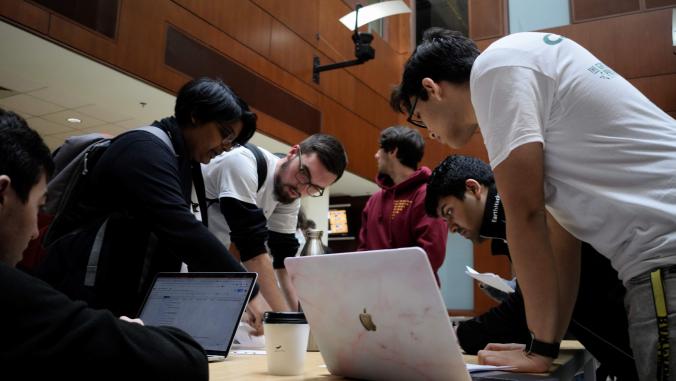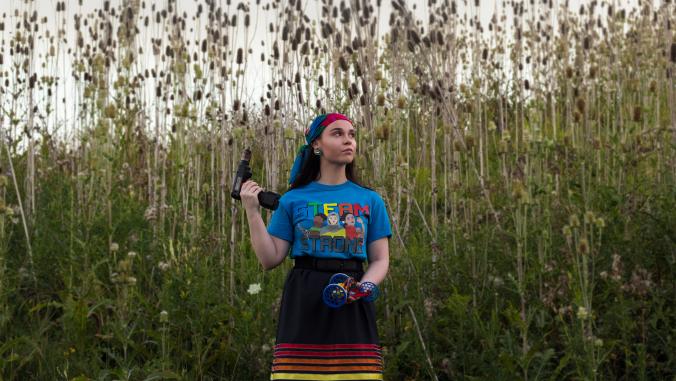App aims to broaden the 'eEcosphere' for consumers and business
<p>You've already tried your share of green lifestyle apps, but a clear purpose and a “snack-able” experience makes this one worth a test drive.</p>

eEcosphere view from eEcosphere
Can millennials and social networking really lead us to a sustainable future?
One startup is betting its business model on “yes.” eEcosphere aims to help users discover, adopt and share actionable ideas to build a more sustainable lifestyle — providing personally tailored tips and local resources to improve their everyday decisions. The company, which launched the iOS version of its application last month, targets millennials, is co-led by one and offers a practical solution for the conscious, connected generation searching for a sense of meaningful action.
The objective? To transform the idea of “being sustainable” from a destination into a lens for evaluating one’s current lifestyle, and through which opportunities to make simple yet meaningful behavior changes become apparent — not to mention fun and collaborative. Along the way, it aims to create new opportunities for companies to evolve more personal, valuable relationships with their younger customers.
At least, that’s the pitch. Being both a millennial and sustainability advocate, I was curious: How is eEcosphere unique, relative to the slew of “green networking” sites that have come and gone? Why is this something the business community should consider as a tool for engaging the more than 80 million 18-to-33-year-olds growing into our market influence?
I spoke with Andrew Krause and George Basile, the intergenerational, student-professor team behind eEcosphere and co-authors of a piece we published last month providing insight into the social forces activating millennials to develop more sustainable lifestyles. I wanted to understand how their product builds on the learnings of past platforms, and what millennials and businesses have to gain.
First, some historical context. The meta-trends reveal that short, “snack-able” user experiences with clear purposes are what capture the minds of — and engender action from — the millennial generation. The emergent rule of thumb is to have a winning experience in a short time, without needing much historical context.
 Traditionally, “green networks” have focused on direct messaging that’s hard to anchor into everyday life. Early on, many were single-dimensional — cultivating high interest but low motivation at the personal level. General actions such as “save water” or “reduce carbon” were not coupled with useful metrics for actually measuring the efficacy of one’s behavior change.
Traditionally, “green networks” have focused on direct messaging that’s hard to anchor into everyday life. Early on, many were single-dimensional — cultivating high interest but low motivation at the personal level. General actions such as “save water” or “reduce carbon” were not coupled with useful metrics for actually measuring the efficacy of one’s behavior change.
Having to ask, “Did I just save water?” does not equate to a winning experience — and certainly not to the cognitive signals that reinforce enduring behavior change.
“Millennials want their everyday decisions to be informed by sustainability,” said Basile, a senior sustainability scientist at Arizona State University’s Global Institute of Sustainability. “But they want it to be about them making better choices for what they care about already and it needs to come in their terms.”
The second class of applications and service platforms, although effective in expanding reach to cover more specific actions, still failed to integrate what’s referred to as “crowd governance” — a vital component that enables people to generate their own ideas, surface good ones to the top and build a sense of community around them.
As Krause summarized: “What we’re doing here is really about leveraging the massive, interconnected and existing networks like Facebook to distribute opportunities for direct action in the small-world communities where there’s high levels of trust and potential collaborators.”
'The future they want'
Imagine this scenario: I like the idea of reducing my water consumption and carbon footprint and supporting sustainable food systems. I care about the issues but, like most of my peers, am not highly motivated — which means I’m not about to scan barcodes at the store, or modify my existing behaviors as a result of general eco-tips encouraging me to “recycle” or “buy organic.”
Behavioral science and market research tell us that all forms of behavior change share something in common: namely, that they require background conditioning, long before the point of decision making, in order for behavior to be adjusted over time.
Ultimately, this is what eEcosphere is facilitating.
Users “build a plan for the future they want” by adopting specific ideas for personal improvement. Ideas are selected through expert Challenges or user-driven idea Exchanges — in effect, creating an idea marketplace where users develop, tag, share and vote on their own ideas. Interactive conversations around each idea establish how you’re doing and highlight specific opportunities to do better throughout the process. For all ideas, eEcosphere creates a unique website that can be promoted by users via Facebook, Twitter and SMS to amplify the idea.
“How can we help you do laundry better?” is a question Krause offered as an example. Suddenly, a general concept becomes a practical opportunity to make smarter decisions when it comes down to less-toxic product choices, machine settings and remembering to air dry.
When he walked me through the user experience, the result was a visual landscape of all the sustainable behaviors I am interested in adopting — a collage of ideas that translate my broad interests into actionable goals. Goals that I can create myself, search for and follow from others, share with my network, post pictures about and clearly note when I’ve completed them.
Beyond promoting to and learning about what’s happening in one’s existing personal network, push notifications let users know when someone within 30 miles has posted opportunities of interest.
“I want to support sustainable agriculture” becomes a discrete opportunity to eat at a local restaurant that, thanks to information sharing from people in your network, you can trust is being sourced sustainably.
“Sixty-two percent of millennials believe they can make a difference at the local level, but when it comes down to finding specific opportunities to act, the experience breaks down,” Krause said. At the heart of eEcosphere is a platform that’s driving down the difficulty of making better decisions about what people want to do every day.
Leading a company's followers
In its initial phase, eEcosphere is managing select campaigns on behalf of companies and brands — soon to be disclosed as the partnerships become public. The trajectory is that it evolve into a self-service model: companies large and small, just like any other user, can develop the story behind their brand and engage their consumer base.
“Many companies just aren’t quite sure how to use the million-person following they’ve developed on Twitter,” Krause cited as an example. “That’s a huge asset waiting to be tapped.” This platform creates the conditions to experiment and learn in a living-laboratory context.
Take Method, which has nearly 60 discrete, sustainability opportunities in their Greens Keeping Manual — ranging from buying its recycled-ocean-plastic-packaged products to joining community-based campaigns. eEcosphere allows not only for each to be maintained individually — by developing a customized base of people interested in that action — but also ultimately data to evaluate what’s gaining most traction and where to focus efforts and investments.
As for me, I’ll be watching to see how the application and community evolve over time — along with how my own behaviors change as a result.





